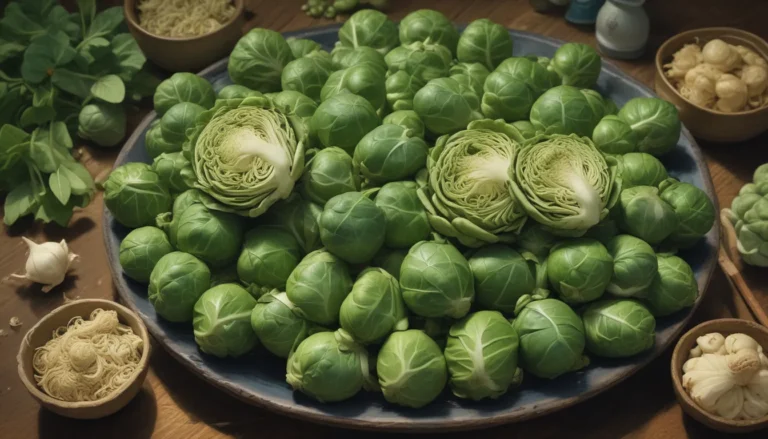Everything You Need to Know About Growing and Caring for Boysenberry Bushes

Introduction
I vividly remember my first encounter with boysenberries at Knott’s Berry Farm, where I enjoyed a slice of boysenberry pie that was out of this world. Little did I know that this delightful fruit was a hybrid of the blackberry, raspberry, dewberry, and loganberry, creating a unique flavor that is hard to resist. Boysenberries are beloved for their larger size, juiciness, and delicious taste, maturing from May through mid-July.
What You’ll Discover in this Comprehensive Guide
- Cultivation and History: Unravel the fascinating history and characteristics of the boysenberry.
- Propagation: Learn how to propagate boysenberries using various methods.
- How to Grow: Discover the essential steps for growing healthy and fruitful boysenberry bushes.
- Growing Tips: Get valuable tips on how to care for your boysenberry bushes.
- Cultivars to Select: Explore different cultivars of boysenberries suitable for home growers.
- Managing Pests and Disease: Arm yourself with knowledge on how to protect your precious berries from pests and diseases.
- Harvesting: Master the art of harvesting boysenberries at the peak of perfection.
- Preserving: Learn how to preserve your bountiful harvest for year-round enjoyment.
- Recipes and Cooking Ideas: Delight your taste buds with creative ways to use boysenberries in your culinary creations.
- Quick Reference Growing Guide: A handy reference to help you grow the juiciest boysenberries.
Cultivation and History
Boysenberries, a member of the rose family, Rosaceae, are a delightful combination of sweetness and tang. Originally bred by horticulturist Rudolph Boysen in 1923, this hybrid fruit became famous thanks to Walter Knott, who nurtured the struggling bushes back to life and named them after his friend. Today, boysenberries are grown commercially in New Zealand, Oregon, and California, as well as by home gardeners in USDA Hardiness Zones 5-9.
Boysenberry Bush Propagation
Propagating boysenberries can be done through various methods such as planting dormant bare roots, nursery plants, cuttings, root cuttings, or tip layering. While growing boysenberries from seeds is not recommended due to their hybrid nature, these luscious berries can be successfully propagated using other techniques.
Transplanting Nursery Starts: When planting nursery starts, ensure you select a sunny location with well-draining soil. Water the transplants generously and provide adequate care to ensure healthy growth.
How to Grow Boysenberries
Boysenberry bushes thrive in full sun locations with organically-rich, well-draining soil. Regular watering, fertilization, and pruning are essential for the optimal growth of these plants. Support structures such as walls or trellises can aid in plant maintenance and fruit production.
Growing Tips
- Fertilize: Apply fertilizer in the spring and water regularly.
- Moisture: Keep the soil evenly moist.
- Mulching: Use light-colored mulch in warm climates and dark mulch in cold areas.
- Pruning: Trim dead canes and limit the number of canes per plant.
Boysenberry Cultivars to Select
While there are limited cultivars of boysenberries available to home gardeners, a few standout selections include “Boysenberry,” “Brulee,” “Mapua,” and “Tasman.” Each cultivar offers unique characteristics such as thornlessness and bold flavors, providing a delightful variety for home growers.
Managing Pests and Disease
Protecting boysenberries from pests and diseases is crucial to ensuring a healthy harvest. Common pests such as birds, aphids, cane borers, raspberry sawflies, and red berry mites, as well as diseases like anthracnose, rust, and gall, can impact berry production. Implementing preventative measures such as netting, beneficial insects, and organic treatments can help safeguard your crop.
Harvesting Boysenberries
The best time to harvest boysenberries is in the early morning when the berries are ripe and easy to detach from the stem. Harvesting typically occurs from mid-May to mid-July, and fresh berries can be stored in the refrigerator for up to three days. Frozen or preserved boysenberries can extend their shelf life for later use in recipes.
Preserving
Freezing boysenberries is an excellent way to preserve their freshness and flavor. Additionally, canning them into jam or incorporating them into a variety of sweet and savory dishes can elevate your culinary creations.
Recipes and Cooking Ideas
From smoothies to pies, boysenberries can be used in a multitude of recipes to tantalize your taste buds. Get creative with boysenberries in both sweet and savory dishes, exploring their versatility and delectable flavor profile.
Quick Reference Growing Guide
- Plant Type: Perennial berry bush
- Water Needs: Moderate
- Hardiness (USDA Zone): 5-9
- Exposure: Full sun, part shade
- Soil Type: Organically rich
- Time to Maturity: 1 year
A Berry Refreshing Summer Treat
Growing boysenberries is a rewarding experience that offers a sweet and tangy treat straight from your garden. By following the essential steps outlined in this guide, you can cultivate healthy and bountiful boysenberry bushes in your own backyard. Share your boysenberry growing tips and experiences in the comments below and savor the delights of homegrown berries!
Don’t miss out on other berry-growing resources:
– Grow Your Own Gorgeous Mulberry Trees
– The Ultimate Fall Berry Planting Guide
– How to Grow Blueberries
– 35 of the Best Strawberry Varieties for Home Gardeners





